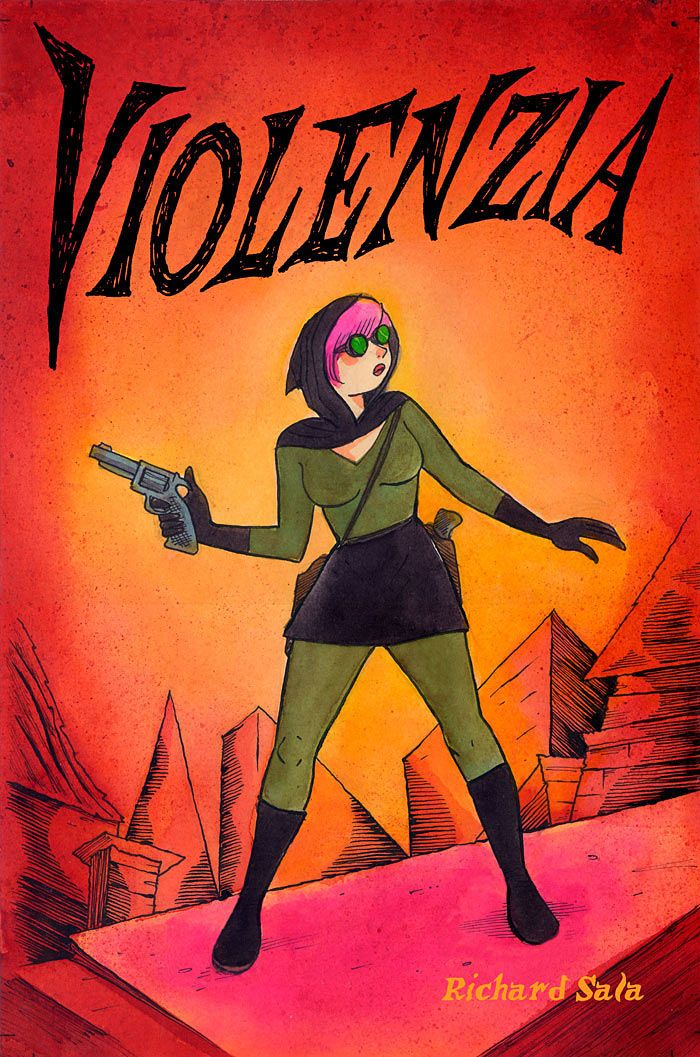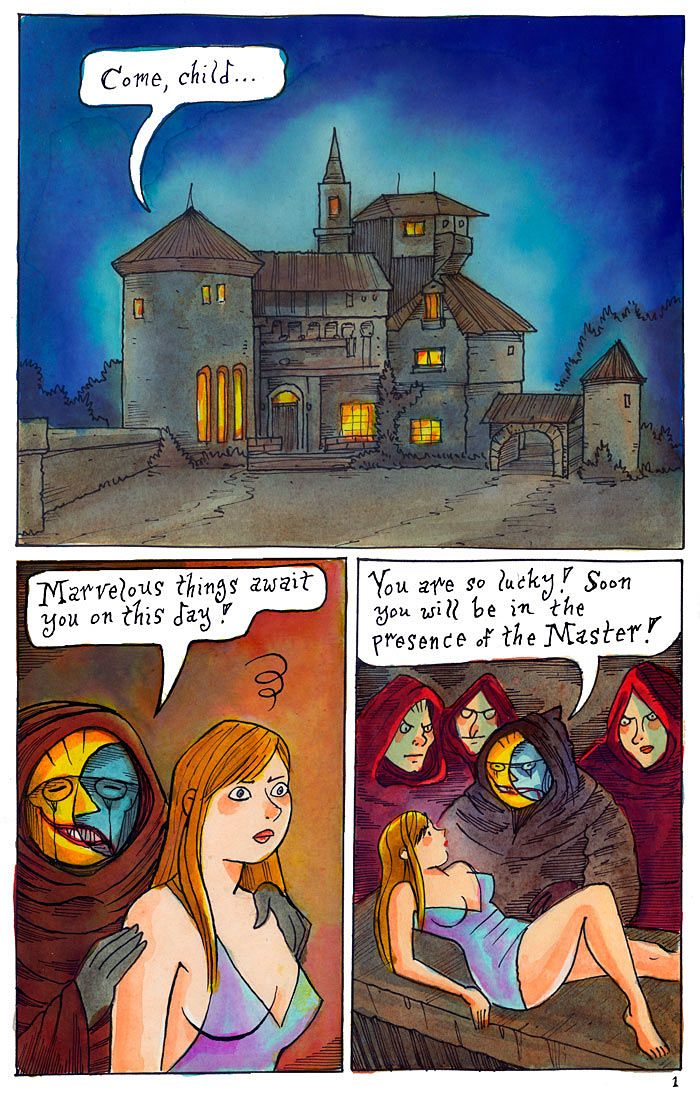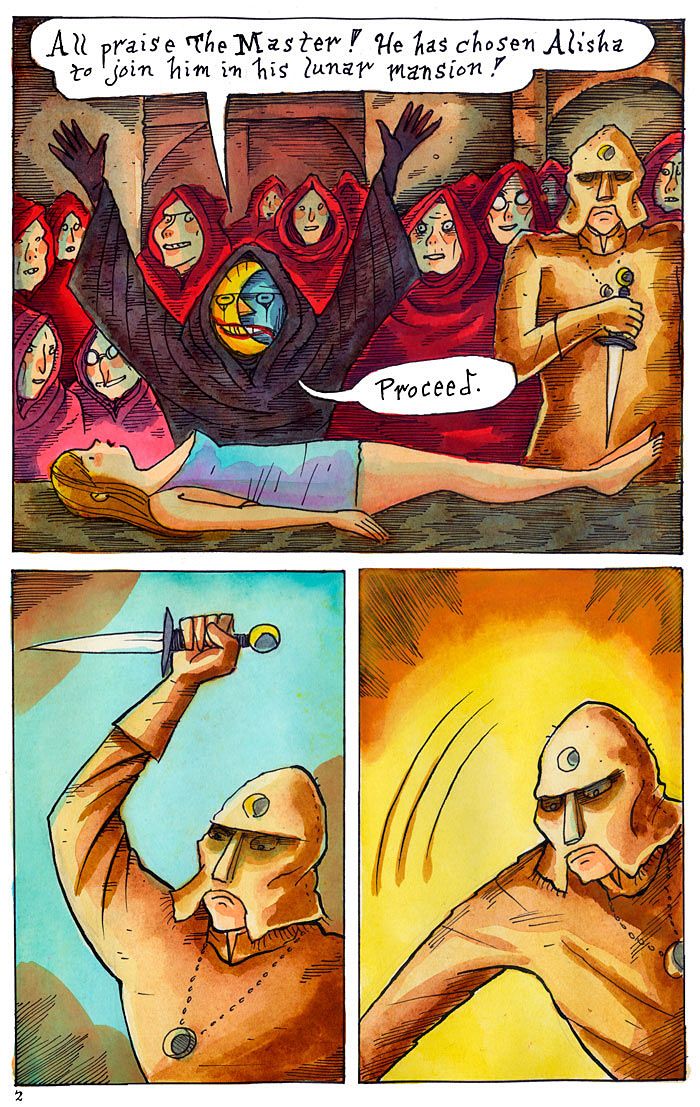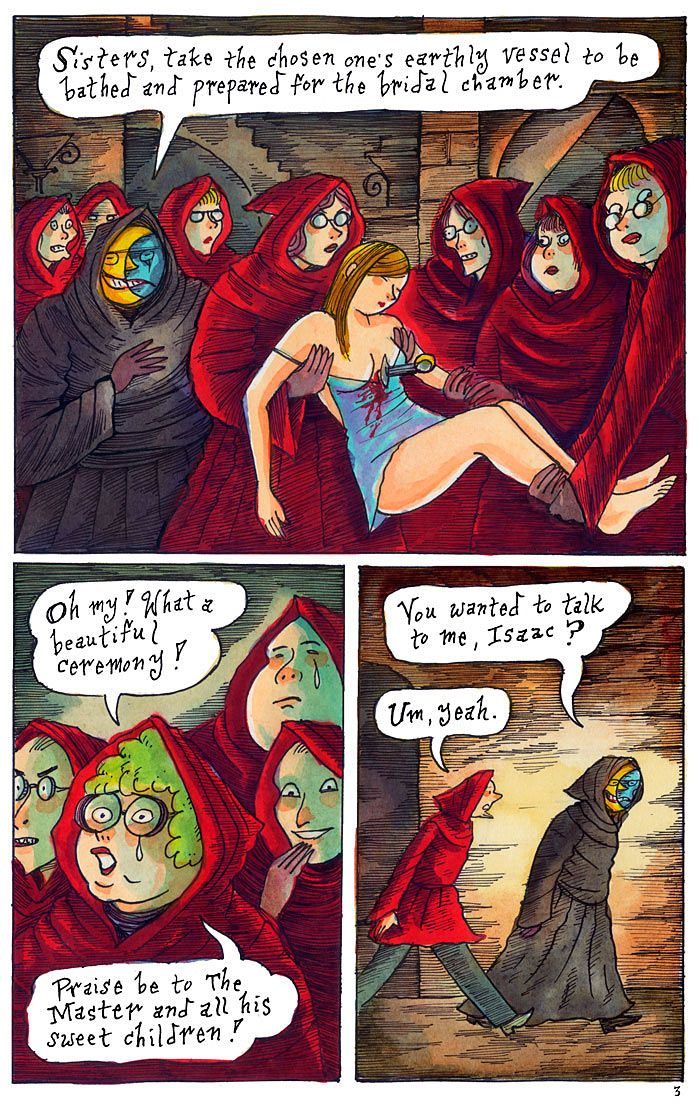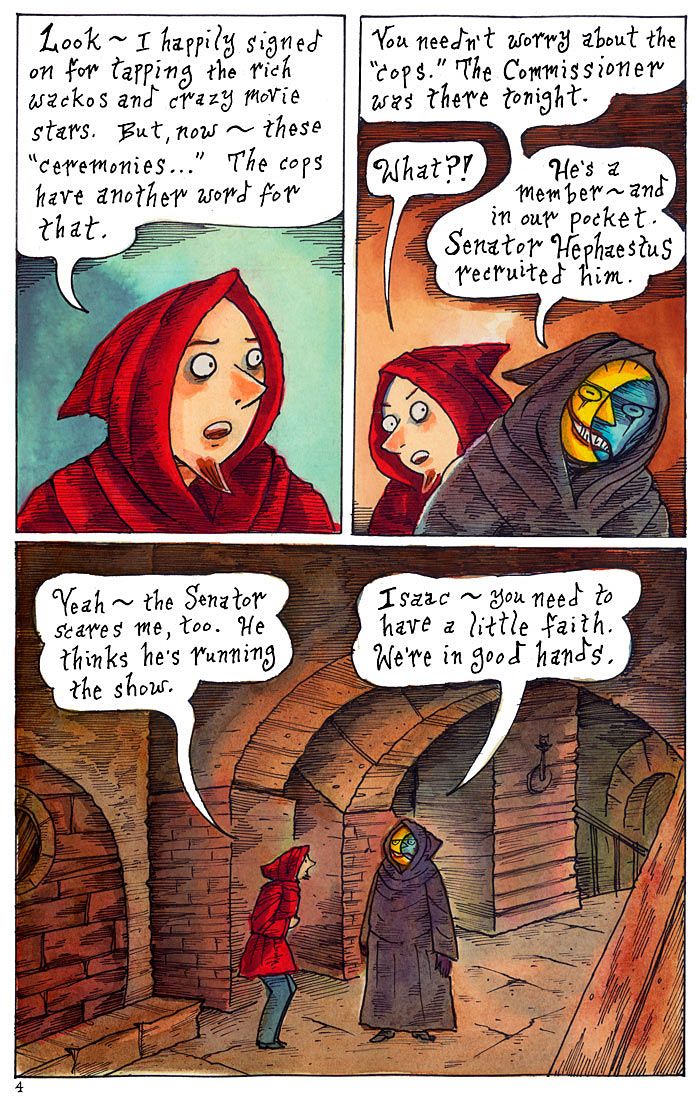Cartoonist Richard Sala is best known for a series of books that mix fantasy and horror, from "Cat Burglar Black" to "Delphine" to "Peculia" to "Mad Night." He's known for colorful heroines and combining genres to make books that are thrilling and funny and strange and deeply addictive.
His new project is "Violenzia." A digital comic that was released by Fantagraphics and comiXology this week, the book features a new heroine from Sala, the titular Violenzia. She's much more a violent pulp heroine than his usual characters, but shares plenty in common with Sala's other work and the book bears Sala's trademark style as Violenzia goes on a bloody rampage through the pages of the book in beautiful color. CBR News spoke with Sala about the new book, its atypical heroine, his decision to go digital and more.
CBR News: What is "Violenzia?"
Richard Sala: "Violenzia" is a 48-page digital-only comic book one-shot. It's a self-contained story about an enigmatic heroine on an enigmatic mission.
Was this always going to be a digital comic or did you initially think it would be a printed comic book?
"Violenzia" was always intended to be what it is-a digital comic book. I've been "exhibiting" (that sounds somewhat more glamorous than "posting") new work on the internet for a few years now. It's been fun. I started doing these mini-exhibitions based around a certain theme on my Tumblr and my blog. These included "Autumn and Evil," "Skeleton Key," "Violent Girls", and smaller series like "Unmasked" and "Pretty Spooky." I like displaying my art this way, but I wanted to get back to doing comics. I hadn't done one since "The Hidden." I briefly entertained the idea of doing a webcomic -- I still may at some point -- but when I was writing, I wished I could do it as a real old-fashioned comic book online. And then I realized I could do just that through comiXology. So "Violenzia" was done specifically as a digital comic book for comiXology.
This is a shorter comic than you've made recently. At what point did you know it was this length? How did you know that this is the entirety of the tale, or at least, as much of it as you wanted to tell?
When I first discussed the idea with my publisher, Fantagraphics, I pitched it as a 24 to 32-page comic book one-shot. Then, as I started the layouts, I realized, since it was going to be a digital release, I didn't need to confine myself to the usual six-panel grid or even a specific page-count. I could tell the story any way I wanted to. So, it eventually became 48 pages. That seemed like a good number.
Richard Sala Explores the World of Dark Fairy Tales in "Delphine"
As a kid I loved one-shot comic books. For one thing, I was fortunate enough to have a stack of the old hardcover "Tintin" books when I was a kid, and those were all self-contained adventures. But I also loved "Classics Illustrated" and those Dell movie comics, because even though those were adaptations of other media, I liked the reading experience of a beginning, middle and end. But probably the biggest influence for this particular book was remembering this comic magazine I had as a kid, which was a crazy, violent one-shot by Gil Kane called "His Name Is Savage." In fact, the working title for "Violenzia" was "Her Name Is Violence!"
You've worked in full color before, but over the past few years as you've been doing it I'm curious how your thinking about color has changed and how comfortable you feel with it?
I still do all my work the old-fashioned way -- ink and watercolor. I do some tweaking in Photoshop when necessary, but that's the extent of my digital work. So, my thoughts about that process haven't changed much. However, I can definitely say that in this case it's nice to be able to show off my color work in RGB rather than CMYK, which is the color system used for print. I have a long history of being frustrated about getting my original paintings to look good in print. When you scan original watercolor art for CMYK you can lose some of the vibrancy of the originals. Pastels-and especially purples and pinks-lose a softness, and become harsher and grayer. Greens become browner and so on. But that's the way it is, so I learned to adjust for that in my printed color work, to make it still look good, if not entirely matching the original art. But now, in this digital format (and online), I can finally show off my color work the way it was truly meant to be seen. So it's nice not to have to second guess how a painting is going to look in print when I'm in the middle of doing it!
How did you decide on Violenzia's look?
One of the mini-exhibitions or series I mentioned that I did on my Tumblr was called "Violent Girls," and for that I played around with various genre characters I had absorbed from popular culture over the years. It included everything from spies to cowgirls to jungle girls to space travelers-all somewhat embarrassingly quaint and silly nowadays but still there in some repressed corner of my brain where a 13-year-old version of me is still alive. So Violenzia, as a character, came out of that series, and her outfit is kind of a mixture of details from the women in that series.
Richard Sala Talks "Cat Burglar Black"
She seems like a slightly different character for you. Is she, to your mind?
Possibly, in some ways. I wanted to do a truly fun, fast-moving comic book. I went back to my childhood love of the old pulps and serials I discovered as a kid, through the paperback reprints or showings on TV. My 1989 MTV cartoon "Invisible Hands" had those same influences. In 1992 I did a one-shot comic for Dark Horse called "Thirteen O'Clock" which featured a character called Mr. Murmur, who was a a somewhat tongue-in-cheek but affectionate take on classic pulp characters like The Shadow or The Spider, or serial heroes like The Masked Marvel. And Violenzia continues in that vein, with her pure, relentless, deadly drive. The mysterious figure from nowhere, leaping fearlessly into action with automatics blazing is right out of a pulp from the 1930s. Looking back, those pulps seemed to be a reaction to the grim realities of the Great Depression, a time when feelings of frustration and desperation were transformed into stories of lone avengers, fighting back against corruption and greed, seeking righteous justice. Violenzia may have come out of similar feelings -- probably the result of paying too much attention to the news -- about the times we're living in now, which, if nothing else, are pretty confusing. I mean, the intention is purely to entertain the reader, just like the pulps. But it's also not just an exercise in style or playing around with familiar genre tropes that have been done a million times before -- I mean, it may be that on some level, but it's also very much about today, a reaction to living in the world today.
If "Violenzia" does well, do you have any interest in doing another digital project of this length? Or another story with this character?
Absolutely. My goals are pretty modest, so for me the best case scenario is that the response is encouraging enough for me to do another one.
"Violenzia" is available now via comiXology.


